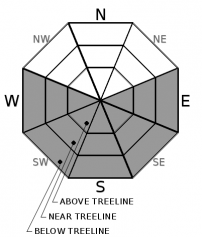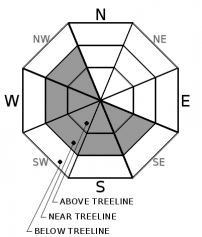| Tuesday | Tuesday Night | Wednesday | |
|---|---|---|---|
| Weather: | Sunny. Chance of precipitation is 0%. | Clear. Chance of precipitation is 0%. | Sunny. Chance of precipitation is 0%. |
| Temperatures: | 43 to 49 deg. F. | 26 to 32 deg. F. | 50 to 56 deg. F. |
| Mid Slope Winds: | Light winds. | Light winds. | Light winds. |
| Expected snowfall: | No accumulation. | SWE = none. | No accumulation. | SWE = none. | No accumulation. | SWE = none. |
| Tuesday | Tuesday Night | Wednesday | |
|---|---|---|---|
| Weather: | Sunny. Chance of precipitation is 0%. | Clear. Chance of precipitation is 0%. | Sunny. Chance of precipitation is 0%. |
| Temperatures: | 38 to 44 deg. F. | 24 to 29 deg. F. | 45 to 51 deg. F. |
| Ridge Top Winds: | East around 15 mph in the morning becoming light. | North around 10 mph. | West around 10 mph. |
| Expected snowfall: | No accumulation. | SWE = none. | No accumulation. | SWE = none. | No accumulation. | SWE = none. |


























